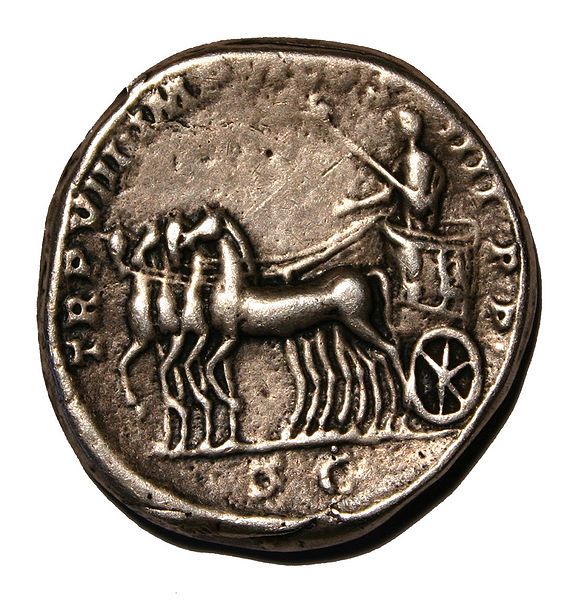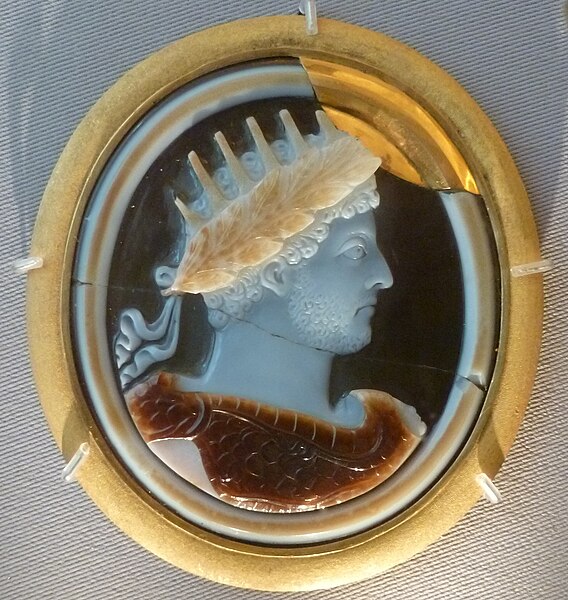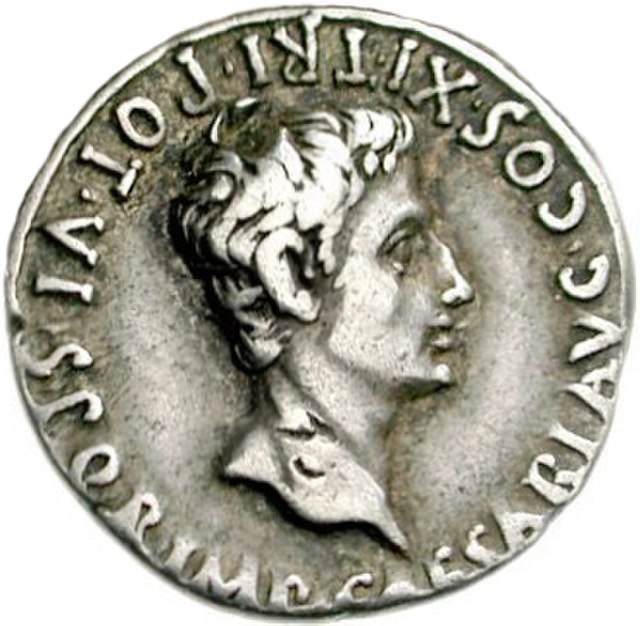Commodus was a Roman emperor who ruled from 177 until his assassination in 192. For the first three years of his reign he was co-emperor with his father Marcus Aurelius. Commodus' sole rule, starting with the death of Aurelius in 180, is commonly thought to mark the end of a golden age of peace and prosperity in the history of the Roman Empire.
Bust c. 180–185
Commodus as a child
A denarius featuring Commodus. Inscription: TR. P. VIII, IMP. VI, COS. IIII, P. P. – S. C. (full meaning: Tribunicia Potestate Octava, Imperator Sextum, Consul Quartum, Pater Patriae. Senatus Consultum – translation: Holder of Tribunician Power for the Eighth Time, Supreme Commander (Imperator) for the Sixth Time, Consul for the Fourth Time, Father of the Nation. Decree of the Senate.)
Commodus with attributes of Helios, Apollo and Jupiter, late 2nd century AD, sardonyx cameo relief, Hermitage Museum, St. Petersburg
The Roman emperor was the ruler and monarchical head of state of the Roman Empire, starting with the granting of the title augustus to Octavian in 27 BC. The term "emperor" is a modern convention, and did not exist as such during the Empire. Often when a given Roman is described as becoming emperor in English, it reflects his taking of the title augustus and later basileus. Another title used was imperator, originally a military honorific, and caesar, originally a surname. Early emperors also used the title princeps alongside other Republican titles, notably consul and pontifex maximus.
Bust of Augustus wearing the corona civica
Augustus depicted as a magistrate at the Ny Carlsberg Glyptotek
Cameo of Augustus in a quadriga drawn by tritons at the Kunsthistorisches Museum, Vienna
Denarius of Augustus (18 BC).








